-
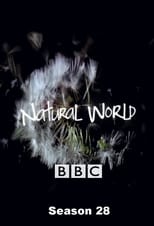
-
-
Natural World : Season 28
-
Air date: 11 Nov '08 - 16 episodesNatural World is a nature documentary television series broadcast annually on BBC Two and regarded by the BBC as its flagship natural history brand. It is currently the longest-running series in its genre on British television, with more than 400 episodes broadcast since its inception in 1983. Natural World is produced by the BBC Natural History Unit in Bristol, but individual programmes can be in-house productions, collaborative productions with other broadcasters or films made and distributed by independent production companies and purchased by the BBC. Natural World programmes are often broadcast as PBS Nature episodes in the USA. Since 2008, most Natural World programmes have been shot and broadcast in high definition.
-
-
List of Episodes (16)
-
Natural World (1983)
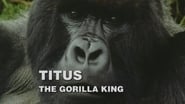
-
1. Titus: The Gorilla King
11 Nov '08Abandoned as a baby, removed from normal gorilla family life as a youngster - so profound were the misfortunes that Titus suffered in his early years that no gorilla scientist could have predicted his eventual rise to power. His moving life story is pieced together here for the first time, based on archive film and the memories of field workers who have studied the mountain gorillas since Dian Fossey's pioneering work more than 40 years ago. At 33 years of age, Titus is not just one of the mos
-
Natural World (1983)
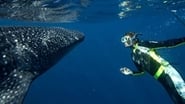
-
2. Whale Shark
18 Nov '08Beginning at the fabulous coral reef of Ningaloo in Western Australia, intrepid marine biologist Mark Meakin attempts to unravel the mysterious wanderings of the biggest fish in the sea. Whale sharks grow to over 12 metres long but are gentle, filter-feeding giants; even Mark's five-year-old son can swim alongside them. Yet no-one knows where they go once they leave Ningaloo's turquoise lagoons. Using satellite tags and photo IDs, Mark tracks them to the white coral beaches of the Seychelles a
-
Natural World (1983)
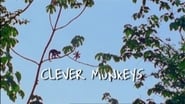
-
3. Clever Monkeys
25 Nov '08David Attenborough's entertaining romp through the world of monkeys has a serious side: for when we look at monkeys we can see ourselves. From memory to morality, from 'crying wolf' to politics, monkeys are our basic blueprint. Pygmy marmosets 'farm' tree sap; bearded capuchins in Brazil develop a production line for extracting palm nuts; white-faced capuchins in Costa Rica tenderly nurse the victims of battle; and in the Ethiopian highlands a deposed gelada baboon has got the blues.
-
Natural World (1983)

-
4. Crocodile Blues
02 Dec '08Another stunning look at the wonders of wildlife as Natural World tonight seeks out the Gharial crocodile. This mighty reptile, which can grow up to 20ft in length and tip the scales at one ton, evolved with the dinosaurs more than 150 million years ago. However, it’s now on the brink of extinction as the largest critically endangered animal on the Indian subcontinent. Filmed over a 12-month period, reptile expert and conservationist Rom Whitaker set out on a mission to solve the mystery of wh
-
Natural World (1983)
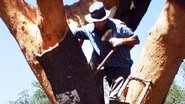
-
5. Cork - Forest in a Bottle
09 Dec '08Every time we weigh up which bottle of wine to buy, we hold the fate of nightingales, rare black storks, secretive wild cats and one of the world's most remarkable trees in our hands. It has all to do with the stopper. If it is cork, it probably came from the bark of one of the ancient cork oak trees from the Montados, in the Alentejo region of Portugal.
-
Natural World (1983)

-
6. Great White Shark
02 Jan '09Wildlife film. South African naturalist Mike Rutzen is crazy about great white sharks. He never saw Jaws, so he doesn't share the terror that makes these sharks the world's most feared predator.
-
Natural World (1983)
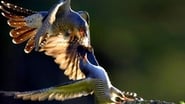
-
7. Cuckoo
09 Jan '09The sound of the cuckoo is to many the very essence of spring, yet behind the magical call is a bird that is a cheat, a thief and a killer. Just how does the cuckoo trick other birds into accepting its eggs and raising its young? Why don't the duped foster parents react as they watch the baby cuckoo destroy their own eggs and chicks? And why do they work so relentlessly to feed a demanding chick that looks nothing like them and will soon dwarf them?
-
Natural World (1983)
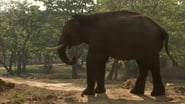
-
8. The Mountains of the Monsoon
16 Jan '09This moving film reveals the differing fortunes of a mother polar bear and a mother grizzly bear, and their new-born cubs, in a rapidly-changing world. The shrinking Arctic ice may be making life much tougher for polar bears, but it is offering new opportunities for grizzly bears to the south. Where once the lives of white and brown bears could not have been more different, in summer-time they now meet along shores and islands almost all the way to the North Pole. Amazingly they have even inter
-
Natural World (1983)
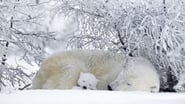
-
9. Polar Bears & Grizzlies: Bears on Top of the World
23 Jan '09This moving film reveals the differing fortunes of a mother polar bear and a mother grizzly bear, and their new-born cubs, in a rapidly-changing world. The shrinking Arctic ice may be making life much tougher for polar bears, but it is offering new opportunities for grizzly bears to the south. Where once the lives of white and brown bears could not have been more different, in summer-time they now meet along shores and islands almost all the way to the North Pole. Amazingly they have even interb
-
Natural World (1983)
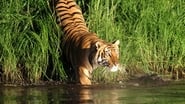
-
10. Man-Eating Tigers of the Sundarbans
30 Jan '09Tiger experts in Bangladesh have a problem: how can they encourage local people to protect the beautiful and endangered Bengal tiger when these animals have developed a taste for human flesh? The Sundarbans forest is one of the biggest tracts of mangrove forest left in the world. It is rich in wildlife and provides important forest resources for communities living around its edge. But up to 50 forest workers are killed by tigers each year and now the boldest animals are sneaking into villages a
-
Natural World (1983)

-
11. Elephants without Borders
06 Feb '09Botswana's elephants are doing very well, too well perhaps. People are worried that too many elephants will damage their fragile desert home and have suggested that up to 60,000 should be culled. Researcher Mike Chase studies ancient elephant migration routes - he has tracked them across vast deserts, desolate salt pans, and Angolan minefields. Now he thinks he has a plan that could safeguard their future.
-
Natural World (1983)
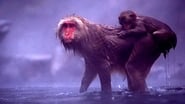
-
12. Snow Monkeys
13 Feb '09n 1970, a picture of a snow monkey bathing in a hot spring graced the cover of Life Magazine. Ever since, Japan's hot-tubbing primates have been protected and well fed for the enjoyment of tourists and photographers - they have become international superstars of the natural world. But while their unique lifestyle has brought fame, the rest of Japan's snow monkeys lead very different lives, enduring incredible hardships as they fight for survival in their beautiful but unforgiving mountain home.
-
Natural World (1983)
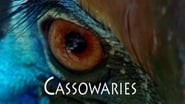
-
13. Cassowaries
19 Feb '09This film follows the dramatic attempts to save these endangered giant birds, and reveals their fascinating natural history for the first time. Narrated by David Attenborough.
-
Natural World (1983)
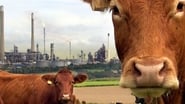
-
14. A Farm for the Future
20 Feb '09Wildlife film maker Rebecca Hosking investigates how to transform her family's farm in Devon into a low-energy farm for the future. Last year's high fuel prices were a wake-up call, and realising that food production in the UK is dependent on fossil fuel, particularly oil, Rebecca sets out to discover just how secure this oil supply is. Alarmed by the answers, she explores other ways of farming and learns that it is actually nature that holds the key to farming in a low-energy future.
-
Natural World (1983)
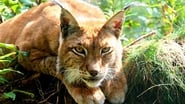
-
15. Iron Curtain, Ribbon of Life
06 Mar '09When communism crumbled in 1989, it created an opportunity for wildlife. The Iron Curtain that divided communist Eastern Europe from the capitalist West had created a no-man's-land protected by barbed wire and minefields - a last haven for many rare animals and plants. This film tells the story of the movement, led by biologist Dr Kai Frobel, that set out to save the wildlife of this precious strip. Now as we celebrate the 20th anniversary of the fall of the Iron Curtain, we can also celebrate
-
Natural World (1983)

-
16. Uakari: Secrets Of The English Monkey
26 Mar '09In the flooded forests of the Peruvian Amazon lives one of the world's rarest and most mysterious primates, the red-faced uakari monkey. Local people call them English monkeys because of their resemblance to sunburnt visitors. Now there is a new Englishman on the scene, Mark Bowler, a young biologist who battles through the forest in his quest to understand the monkeys' secret lives. The film shows the first footage of these extraordinary animals in the wild and reveals why ice cream could be t
-























